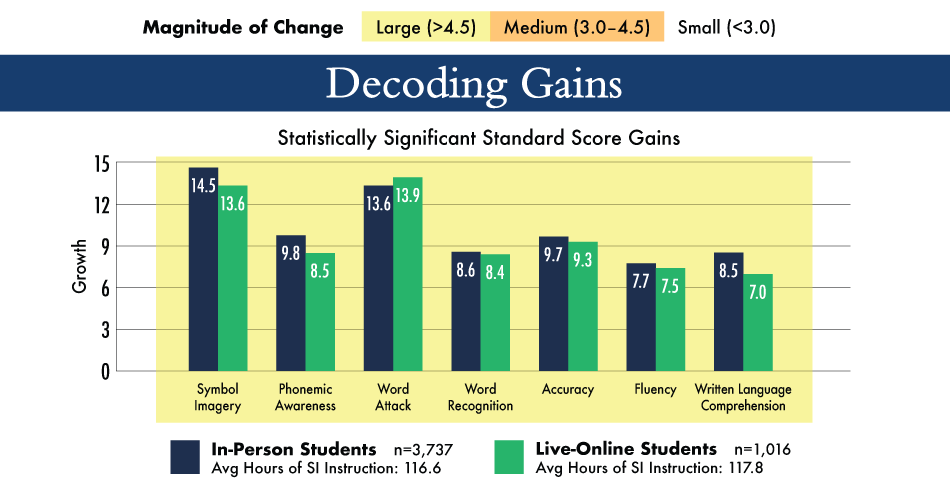Essential Tips to Help Your Child Learn to Read

Reading is one of the most important skills a child will ever develop. It is the foundation for learning across every subject and opens the door to imagination, knowledge, and confidence. As a parent, you play an essential role in helping your child learn to read. With the right reading instruction, structure, encouragement, and support, you can nurture a love for reading that lasts a lifetime.
This article highlights practical ways to support your child’s reading development at home. We’ll explore the fundamentals of learning to read, share engaging activities, and discuss how to create a supportive environment. You’ll also find guidance for children who may be reluctant or struggling readers—and how Lindamood-Bell’s approach to learning can help.
Understanding the Basics of Reading

Learning to read is a big step, and it depends on several key skills: phonemic awareness, phonics, fluency, vocabulary, and comprehension. When these skills work together, your child can grow into a confident, independent reader.
Phonemic awareness is your child’s ability to hear and identify the individual sounds in words. Phonics is the relationship of the sounds, their corresponding letters, and the sounding out of words. As some words become instantly recognizable, fluency builds, making reading smoother and more enjoyable. Vocabulary growth expands your child’s knowledge of words, and comprehension helps them understand and truly enjoy what they’re reading.
At Lindamood-Bell, we go beyond typical learning methods and develop the underlying sensory-cognitive skills needed for reading: Symbol imagery is the ability to form mental pictures of letters and words, allowing for accurate decoding and spelling. Concept imagery is the ability to create mental images of language in the mind’s eye, essential for comprehension, recall, and critical thinking. Together, these skills make reading not only possible but rewarding.
Incorporating activities that focus on these components into your child’s learning routine provides a strong foundation for their reading journey. At Lindamood-Bell, we offer personalized instruction designed to strengthen these crucial reading components, helping your child to develop the skills needed to become a proficient reader.
Engaging Activities to Make Learning to Read Fun

Children can be more motivated to read when the process is interactive and enjoyable. Here are some strategies to make reading engaging:
Ask Open-Ended Questions
As you read together, ask questions like, “What do you think will happen next?” or “Why do you think the character made that choice?” This encourages your child to visualize the story and strengthens comprehension skills.
Offer Books That Match Their Interests
Encourage engagement by selecting books that align with your child’s interests and passions. For example, if they love animals, plan a library visit; after a trip to the zoo, explore related books. Graphic novels and comics can also build confidence and enjoyment before tackling more complex texts.
Use Listening and Storytime
Listening to stories together through audiobooks or family storytime models fluent reading and supports the development of the imagery-language foundation. Discuss the story, visualize it together, and make predictions about what happens next.
Set Achievable Goals
Setting small goals, such as reading a certain number of books or mastering sight words, gives children a sense of accomplishment. Celebrate these achievements to reinforce that reading is both enjoyable and rewarding.
Creating a Reading-Friendly Environment

The right environment can make a big difference when helping your child learn to read. Create a cozy reading nook at home where distractions are minimal. Stock the space with age-appropriate books tailored to your child’s interests. Children who feel ownership over their reading choices are more motivated to engage.
Establish a daily reading routine. Quiet family reading time reinforces the idea that reading is valued and enjoyable. Parents who model reading as a leisure activity also show that reading is rewarding. This routine, combined with a supportive environment, helps children strengthen the sensory-cognitive skills they need to decode, comprehend, and enjoy reading.
Supporting Struggling Readers

It can be challenging to see your child struggle with reading. Recognizing signs of reading difficulties early is crucial for providing appropriate support. Look for indicators such as frequent frustration during reading or trouble understanding what they’ve read. Key signs may include:
-
Difficulty sounding out words
Some children struggle to decode words accurately, even when the words are phonetically regular. They may add, omit, or substitute sounds—for example, reading “steam” as “stem” or “stream” incorrectly. -
Difficulty learning and retaining sight words
Sight words, like “eye” or “thought,” must often be recognized instantly. Children who struggle may try to sound out every word or guess, sometimes reading “people” as “purple.” -
Slow and laborious decoding skills
Phonics and phoneme awareness instruction are common in early education, but children who struggle may become bogged down in decoding each word, losing fluency, and failing to recognize the same word in subsequent text. -
Difficulty reading fluently in context
Some children can decode words but have trouble reading smoothly in sentences or paragraphs. Choppy reading can interfere with comprehension and overall understanding of the text.
These signs often point to underlying weaknesses in symbol imagery (visualizing letters and sounds) or concept imagery (forming mental images from language). Without these sensory-cognitive skills, reading can be frustrating, and children may avoid it.
A Lindamood-Bell learning ability evaluation can identify specific areas where your child may need targeted support. Simply having a child read more will not resolve these difficulties. Structured instruction that strengthens sensory-cognitive skills is essential for building reading independence.
At Lindamood-Bell, we address the root causes of reading difficulties. Our personalized instruction builds symbol imagery, concept imagery, and other sensory-cognitive skills, enabling children to read accurately, fluently, and with comprehension. With the right support, children can transform from hesitant readers to confident, independent learners.
Help with Reading at Lindamood-Bell

At Lindamood-Bell, we are dedicated to helping children develop the confidence and skills necessary to read with ease and proficiency. Our evidence-based approach focuses on the sensory-cognitive foundations of reading, giving students the tools to decode accurately, understand what they read, and enjoy books independently.
No matter where you are, your child can access our live, one-on-one online instruction. Whether your child is just beginning to learn to read, is a reluctant reader, or is struggling with specific challenges, each program is individualized and delivered one-to-one, ensuring that students of all ages receive personalized support at their own pace. The latest peer-reviewed results show that our live-online instruction achieves the same results as our in-person instruction.

Average Age:
In-Person Students: 9.7
Live-Online Students: 10.4
If your child struggles with reading or could benefit from additional support to strengthen their skills, Lindamood-Bell can provide the instruction and guidance to help them succeed.
Contact our learning specialists today to discover how Lindamood-Bell can make a difference in your child’s reading journey. Call 800-300-1818 or contact us online.





